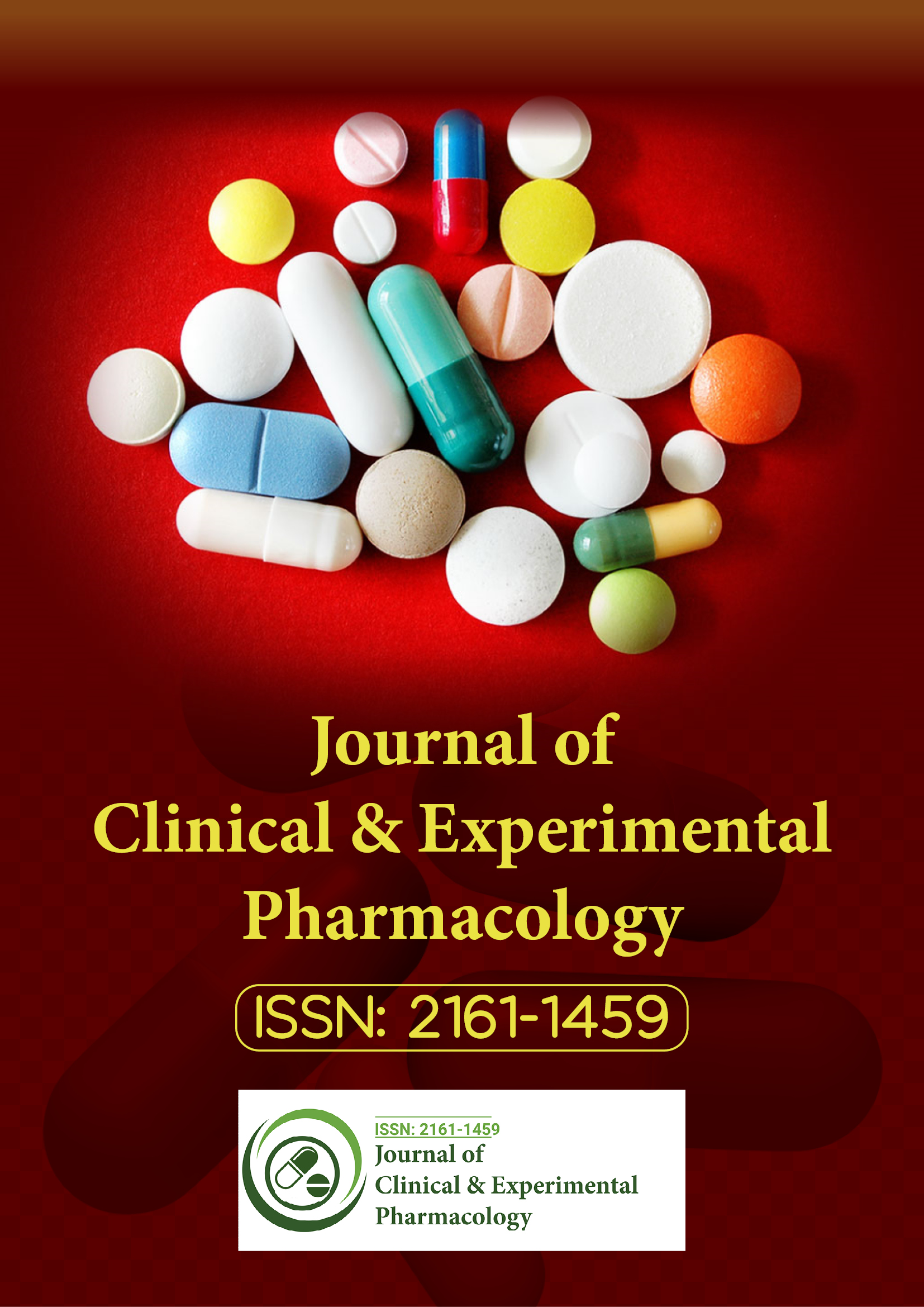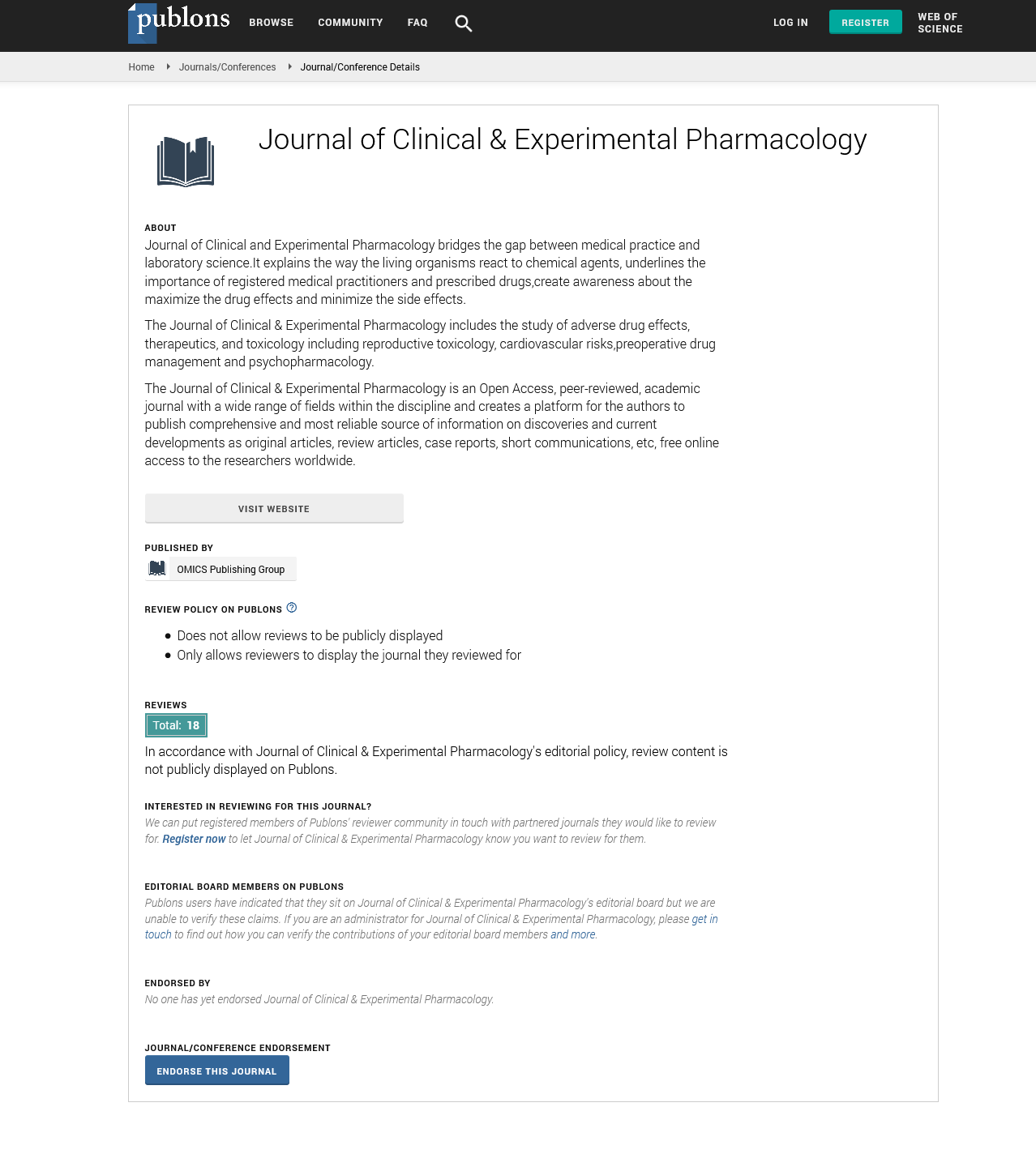Indexed In
- Open J Gate
- Genamics JournalSeek
- China National Knowledge Infrastructure (CNKI)
- Ulrich's Periodicals Directory
- RefSeek
- Hamdard University
- EBSCO A-Z
- OCLC- WorldCat
- Publons
- Google Scholar
Useful Links
Share This Page
Journal Flyer

Open Access Journals
- Agri and Aquaculture
- Biochemistry
- Bioinformatics & Systems Biology
- Business & Management
- Chemistry
- Clinical Sciences
- Engineering
- Food & Nutrition
- General Science
- Genetics & Molecular Biology
- Immunology & Microbiology
- Medical Sciences
- Neuroscience & Psychology
- Nursing & Health Care
- Pharmaceutical Sciences
Systemic and spinal administration of FAAH, MAGL inhibitors and dual FAAH/MAGL inhibitors produce anti-pruritic effect in mice
World Congress on Pharmacology
July 20-22, 2015 Brisbane, Australia
Ozgur Yesilyurt1, Mutlu Cayirli2, Yusuf Serdar Sakin1, Melik Seyrek1, Ahmet Akar1 and Ahmet Dogrul1
Scientific Tracks Abstracts: Clin Exp Pharmacol
Abstract:
The increase of endocannabinoid tonus by inhibiting fatty acid amide hydrolase (FAAH) or monoacylglycerol lipase/MAGL inhibitors have also been described to get enhanced endocannabinoid therapeutic effect. Recent studies reported that systemic administration of FAAH and MAGL inhibitors elicit anti-pruritic effect. The effects of dual FAAH/ MAGL inhibitors on pruritus in comparable FAAH and MAGL inhibitors are not investigated yet. Additionally, it is well known that spinal cord is an important site in the modulation of itch, but there is no study to investigate the potential contribution of spinal site of action of FAAH, MAGL and dual FAAH/MAGL inhibitors on pruritus. In this study, we examined and compared dose related anti-pruritic effects of selective FAAH inhibitor PF-3845, selective MAGL inhibitor JZL184, and dual inhibitor JZL195 on intradermal serotonin-induced scratching model following their intraperitoneal or intrathecal administration in mice. Serotonin (25 ?g) was injected intradermally in a volume of 50 ?l into the rostral part of skin on the back of male Balb-C mice (23-28 gr) and scratches were counted for a 30 min observation period. Both systemic or intrathecal treatments withPF-3845, JZL184 or JZL195 produced similar dose dependent anti-pruritic effects. Our results suggest that endocannabinoid degrading enzymes FAAH and MAGL involve in pruritic process at spinal level and FAAH, MAGL or dual FAAH/MAGL inhibitors have promising anti-pruritic effects when given systemically or intrathecally.

